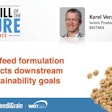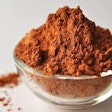
The cost of registering a new feed additive is staggering, let alone the expense to research and develop it in the first place. This was related to me recently by a very serious feed additives manufacturer. As such, we should not expect to see many new molecules registered as feed additives. Instead, many developers are looking into molecules in existing additives that can offer additional benefits for their products, without having to undergo the expensive process of registration.
Here’s an example. We know that wood fibers, at least those from whole conifer trees, contain several compounds beyond fiber: polyphenols and resins come easily to mind. What are the effects of these molecules when wood fiber is used in piglet and broiler diets? Perhaps, they have certain traits that could lead to the exclusion of another ingredient-additive?
Here’s another example: lysozyme that is found in conjunction with sources of immunoglobulins. Eggs, for example are rich in lysozyme, as is blood. And, lysozyme has been shown to reduce the need for medication, at least in some initial promising trials.
And, why not, algae: they contain a whole new world of molecules, some of which can enhance immunity, bind mycotoxins and do what many other additives do now as individual, straight, single-action ingredients.
So, if I were asked, I would say the future is in combined-action additives that offer more than one benefit, without increasing cost; even better if they can result in overall feed cost reduction.














